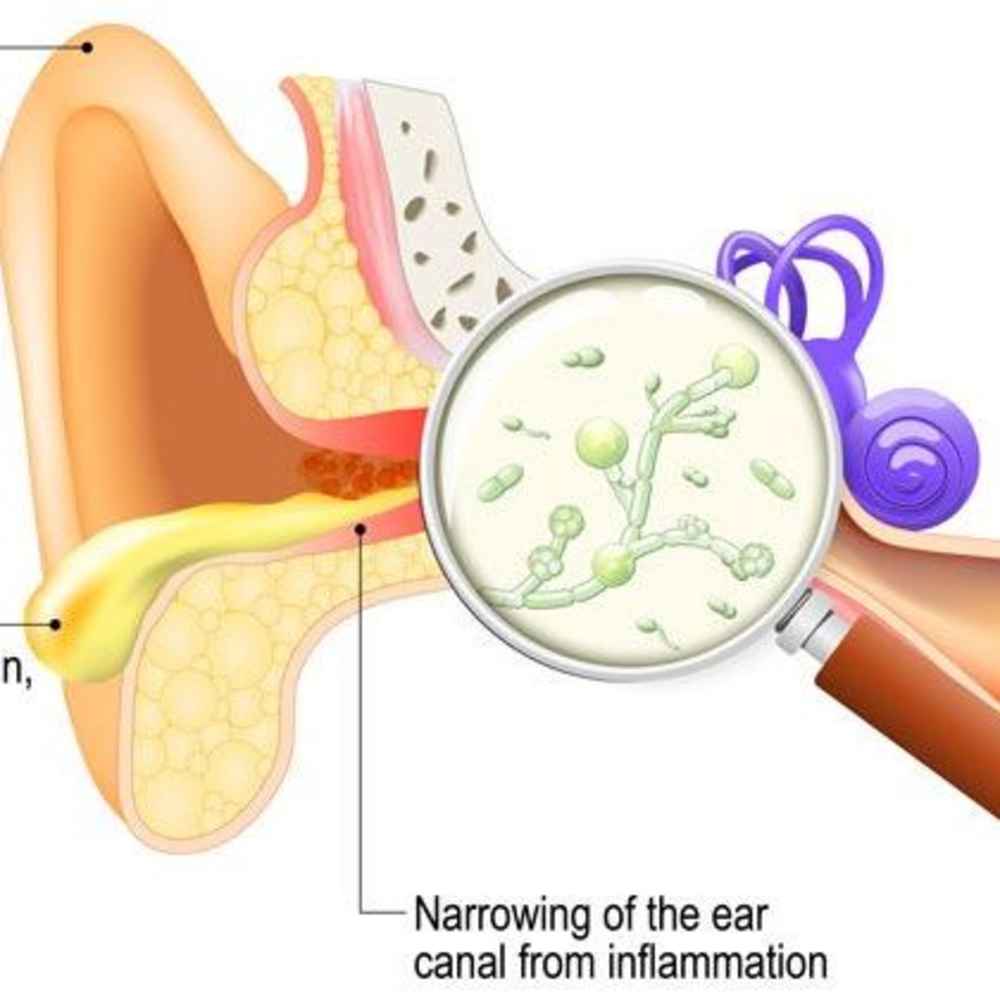Swimmer’s Ear: Symptoms and Treatments

Once diagnosed, the condition swimmer's ear be easily treated.
The thin layer of skin that lines the outer ear canal is vulnerable to bacterial infection, especially after long swims that can introduce bacteria into the ear canal. Left untreated, the infection (known as swimmer’s ear) can progress to mild, moderate, and advanced stages. The condition is more prevalent among children and teenagers but can occur at any age. The doctors at Chesapeake Ear Nose & Throat have over 25 years of experiencing diagnosing and treating the ear condition at our Baltimore, MD, clinic.
Swimmer's Ear can cause discharge, a feeling of stuffiness, and other uncomfortable symptoms.
Symptoms of Swimmer's Ear
Early symptoms of swimmer’s ear include redness near the ear canal, itchiness, and mild discomfort. Left untreated, those symptoms can progress to moderate levels of pain, intense itching, fluid discharge, impaired hearing, and the feeling of stuffiness in your ear canal.
If you are experiencing any of these symptoms, you may have an advanced infection and should seek immediate medical attention:
- Severe pain that radiates from the ear outward
- Fever
- Significant swelling of the outer ear
- Complete blockage of your ear canal
- Swelling in the lymph nodes (neck area)
- Pus draining from the ear
Causes and Conditions
Your outer ear canal is designed to ward off bacteria. Ear wax acts as a natural barrier, and the downward slope of your ear canals is also designed to encourage the drainage of fluids. When water enters your ear after prolonged periods of swimming, or even after a bath, the moisture can compromise your natural defenses by creating a favorable environment for bacteria.
Early symptoms of swimmer’s ear include redness near the ear canal, itchiness, and mild discomfort.
Any foreign object that enters the ear canal (whether it be an earbud, cotton swab, or a finger) can remove part of the protective layer of ear wax or break enough of the skin’s surface to allow bacteria to infect the site.
Common risk factors for swimmer’s ear include:
- A narrow ear canal (common among children)
- Swimming
- Aggressive ear cleanings
- Use of headphones or earbuds
- Skin allergies
- Young age
Treatment Options
Left untreated, swimmer’s ear can result in temporary hearing loss, chronic infections, and more widespread infections. During your appointment, one of our doctors will use an otoscope to examine your ear canal. The doctor may clean your outer ear canal or prescribe ear drops that contain steroids, antibiotics, an acidic solution, antifungal medications, or other forms of medication. Oral antibiotics can also treat swimmer’s ear.
While undergoing treatment, it is best to avoid diving, flying, wearing earplugs, and bathing in a way that will wet the ear.
How To Prevent Swimmer's Ear
Several tips can typically prevent the onset of swimmer’s ear:
- Keep your ears dry
- Avoid putting objects in your ear
- Act early if your ears feel irritated or clogged
- Use alcohol-based ear drops to dry your ears if they do become clogged
- Avoid polluted swimming areas
- Avoid swimming if you had a recent infection
- Wear earplugs when swimming
Contact Our Office Today
If you are experiencing soreness in your ear or other signs of infection, you may have swimmer’s ear. Our team can diagnose and treat the condition before a more serious infection develops. To schedule an appointment, contact us online or call (410) 356-2626.
“I received excellent care at Chesapeake ENT. Their prompt response and cheerful attitudes made for a wonderful experience. All of the audiologists were very helpful. Especially Dr. Laura Toll, her knowledge of hearing aids and the new technology offered made for an easy decision."
★★★★★
- Tanya
"Was very knowledgeable and helpful."
★★★★★
- Saafir
"Very courteous and on time."
★★★★☆
- Pauline




